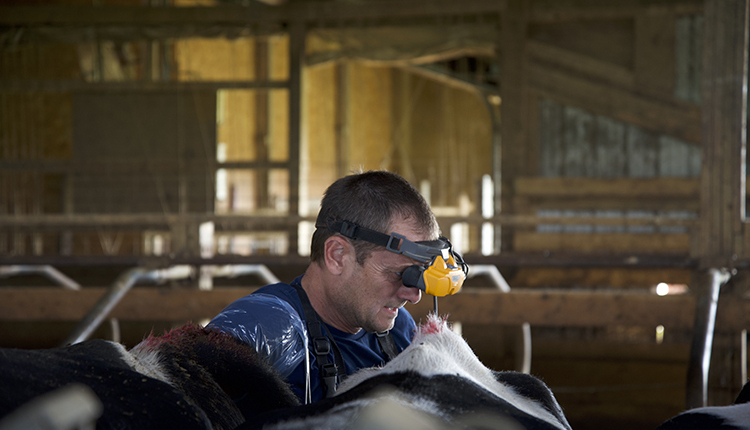
I completely understand the motives behind this question. The longstanding recommendation is to inseminate cows about 12 to 16 hours after the final GnRH treatment of the protocol. On most farms, A.I. breeders want to inseminate cows in the a.m. when cows are fed and easily restrained after they return from the parlor from the morning milking. To achieve this, the last GnRH treatment should be given later in the afternoon so that cows can be inseminated 12 to 16 hours later, the next morning. But moving the last GnRH treatment to the afternoon is problematic, because it is a difficult time to handle cows. Why can’t we just inseminate the cows at the same time as the last GnRH treatment? This is a protocol variation that has been termed “cosynch” because insemination and treatment with GnRH occur simultaneously, thereby eliminating one cow-handling period and simplifying management of the protocol. To answer this question, we must review some basic events about reproduction in dairy cattle, what I like to call Repro 101.
Repro 101
GnRH is an abbreviation for gonadotropin-releasing hormone and is produced by the hypothalamus, which is located in the lower part of the brain. Near the end of the estrous cycle when progesterone is low and the cow exhibits standing heat induced due to estradiol from an ovarian follicle, GnRH is secreted from the hypothalamus and travels a short distance to the anterior pituitary gland which then causes release of another hormone called luteinizing hormone or LH. A surge of LH occurs about two to four hours after release of GnRH from the hypothalamus which, in turn, induces ovulation of a follicle on the ovary about 24 to 32 hours after the LH surge and release of the oocyte or egg into the oviduct.
If this all sounds complicated, it is! We spend a whole semester teaching this to our students at University of Wisconsin-Madison. These events are precisely coordinated so that the oocyte released after ovulation can be fertilized by a sperm from the bull in natural service. But for this to happen the bull must inseminate the cow at the right time relative to ovulation, which is facilitated by standing heat when the cow is receptive to being mounted by the bull.
Synchronization protocols and artificial insemination
The final GnRH treatment of synchronization protocols including ovsynch and double-ovsynch induces ovulation of a follicle before estradiol can increase enough to cause estrus. In other words, most cows will not show estrus during these protocols. But without estrous behavior, how do we know when to inseminate cows for optimal fertility relative to the final GnRH treatment that causes ovulation? This question was answered in a study from UW-Madison that was published in 2008. Cows were randomized to receive what we call an “ovsynch-56” protocol in which the final GnRH treatment is given in the afternoon 56 hours after the prostaglandin treatment and timed A.I. occurs the next morning, versus a cosynch protocol in which the final GnRH treatment and timed A.I. occurred simultaneously 48 hours after the prostaglandin treatment.
The proportion of pregnant cows at the pregnancy diagnosis conducted 32 days after insemination was 27% for the cosynch treatment versus 36% for the ovsynch-56 treatment. This 9-percentage point difference represents a 33% relative reduction in pregnant cows when using a cosynch protocol versus the correct timing of A.I. relative to ovulation in the ovsynch-56. That is a lot fewer pregnant cows. We have a new paper on the timing of A.I. relative to increased activity using an activity monitoring system and synchronization of ovulation after a double-ovsynch protocol that will be published in the Journal of Dairy Science soon, and I will elaborate on those results later. Until then, my best advice for timing of A.I. relative to the last GnRH treatment of a synchronization protocol is this: Stop doing cosynch!








